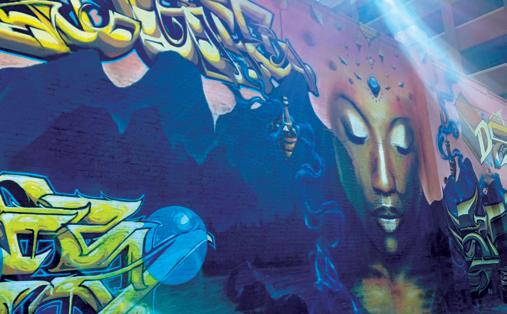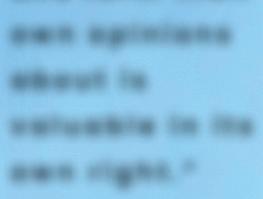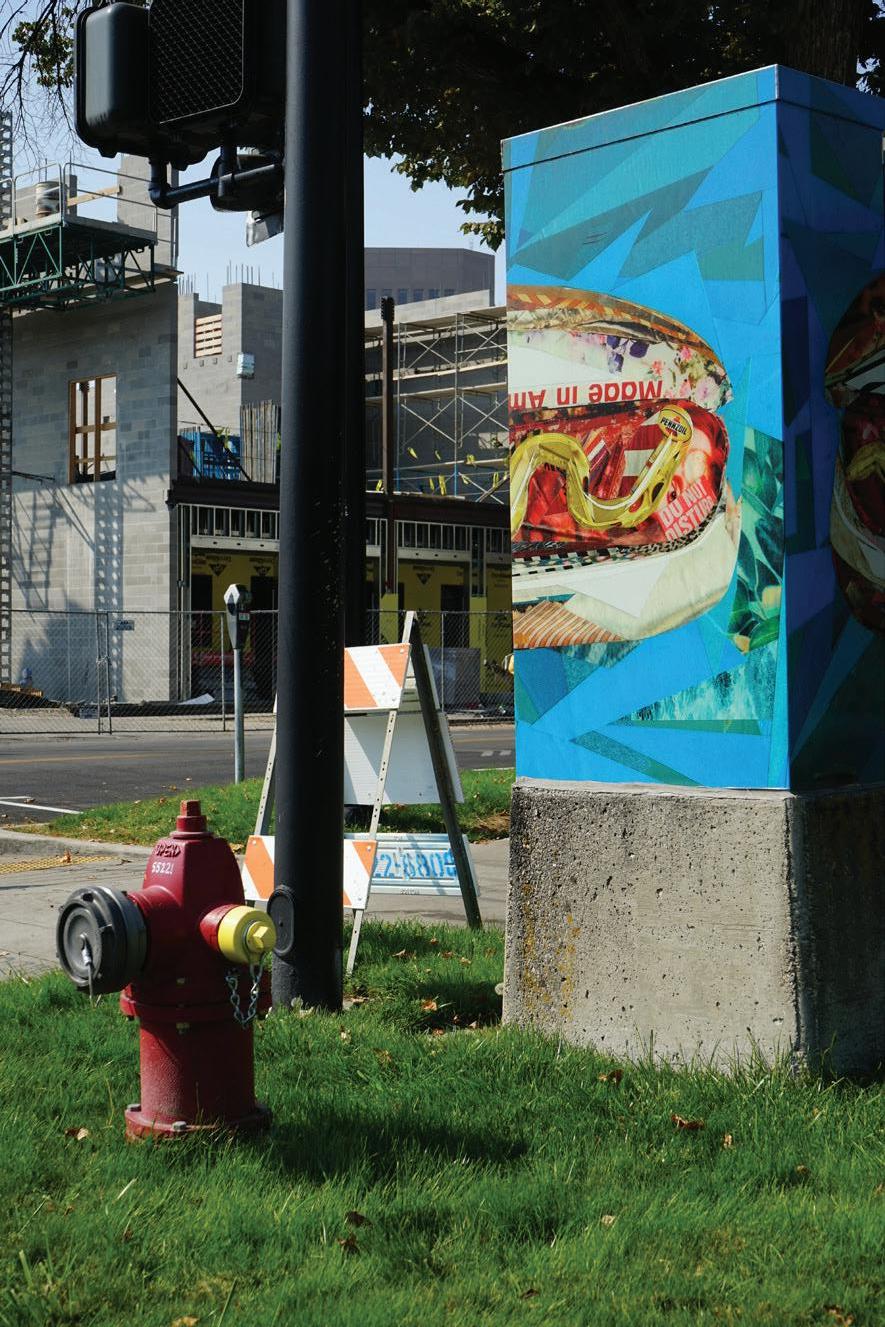
4 minute read
Boise’s Public Art Conversation
BOISE’S PUBLIC ART
C O N V E R S A T I O N
Advertisement



TRACY BRINGHURST
(Top) Mural at Freak Alley (Center) David Carmack Lewis’ most recent work on the downtown Key Financial Center depicts part of the Payette River.
BY EMILY ALEXANDER
Whether seeking out local art or simply wandering downtown in search of something to eat, locals and visitors alike will fi nd it diffi cult to miss Boise’s extensive and far-reaching displays of public art. anks in part to the Percent-for-Art program, which allocates 1.4% of all capital project funds to the integration of murals, sculptures and other installations into Boise street corners and storefronts, the city’s infrastructure has become as unique as its inhabitants. is public art program touches every corner of Boise, from the infamous Freak Alley to the lesser-known sculpture-laden foothills on the outskirts of town.
One of the newest additions to downtown Boise is David Carmack Lewis’ massive mural on the side of the Key Financial Center building on the corner of Capitol Boulevard and Idaho Street, depicting the South Fork of the Payette River. Lewis, a Portland, Oregon resident, is also the artist behind “ e Big Backyard,” a mural on Idaho and 15th streets, and “Absence and Presence,” another on Sixth and Myrtle streets, and he’s spent enough time in Boise to understand that its residents “have a deep connection to the lands that surround them.”
His latest project, separated into the rectangular scaff olding of the building, captures small pockets of the natural world situated within the bustling city block.
“When you’re walking around downtown, you’re not seeing that land. You’re surrounded by buildings,” Lewis said. “So I guess [the mural] is a way to bring it a little closer.”
The river appears as though the viewer is standing above and looking down on it—through a window, perhaps—which creates an almost illusory experience when gazing up at the 11-story mural from the ground level. It is a painting that insists on a second look; viewers must orient themselves to the world in the painting and then reorient to the world around them, suddenly altered.
This is what art does: restructures quotidian rhythms to create music where once was just traffic, automatic doors swishing open, the sides of buildings. Boise residents and visitors share in the opportunity to discover something new in the 325 public art installations across the city on traffic boxes and manhole covers, in schools or on sidewalks. Many traditional art venues are not readily accessible to everyone due to extraneous entry fees or exclusionary gatekeepers, but free public art—especially of the range and magnitude that exists in Boise—offers a unique experience that meets people where they are, regardless of financial concerns or even personal resistance.
“Just having it out there in the world for people to interact with and form their own opinions about is valuable in its own right,” Lewis said.
Thanks to Boise’s Department of Art and History, 269 streets across the city have been transformed into engaging—and free—art installations.
Even traffic boxes have become canvases in Boise. Since 2010, the city has commissioned over 200 art-wrapped traffic boxes designed by artists with a wide variety of styles, as quickly becomes evident the more boxes one notices dotting the streets.
Located in and around busy intersections and popular public gathering spaces, the individuality of one piece speaks to the individuality of another, and together they build a community atmosphere that resists homogeneity and celebrates a gathering of many voices. “Batul’s Mermaid,” (between Main and Idaho streets), highlights Reham Aarti’s mosaic work, the vinyl covering a photograph of the physical piece. Down the street, Ken Zabel’s “Rockstars on Parade” is an acrylic painting of famous musicians.
This chorus is in part what drew David Carmack Lewis to Boise to contribute his voice to the city’s burgeoning array of public art. The city’s vast collection of art pieces is a long, loud conversation spoken through car windows and across bus stops by local Boiseans primarily—only 21 of the 335 artists who have contributed work to Boise’s public art reside outside of Idaho. But occasionally artists travel to Idaho’s capital to add a new voice to the public art scene, as Lewis did earlier this year.
“It’s an outside perspective, but [one that’s] trying to understand,” Lewis said, describing how it felt to create a lasting imprint in a city that’s not his own.
It’s not his mural alone that forms and foments this community register; rather, it’s Lewis’ piece alongside the many others that cover Boise’s streets.
“Those two different voices of murals are a dialogue,” Lewis explained. “It’s about engaging the community with the broader world and the broader world being aware of the community.”

(Right) You’ll find ‘Collage Hot Dog’ by Ann Boyles on the corner of Bannock and Fifth streets in downtown Boise, among many other traffic boxes.










